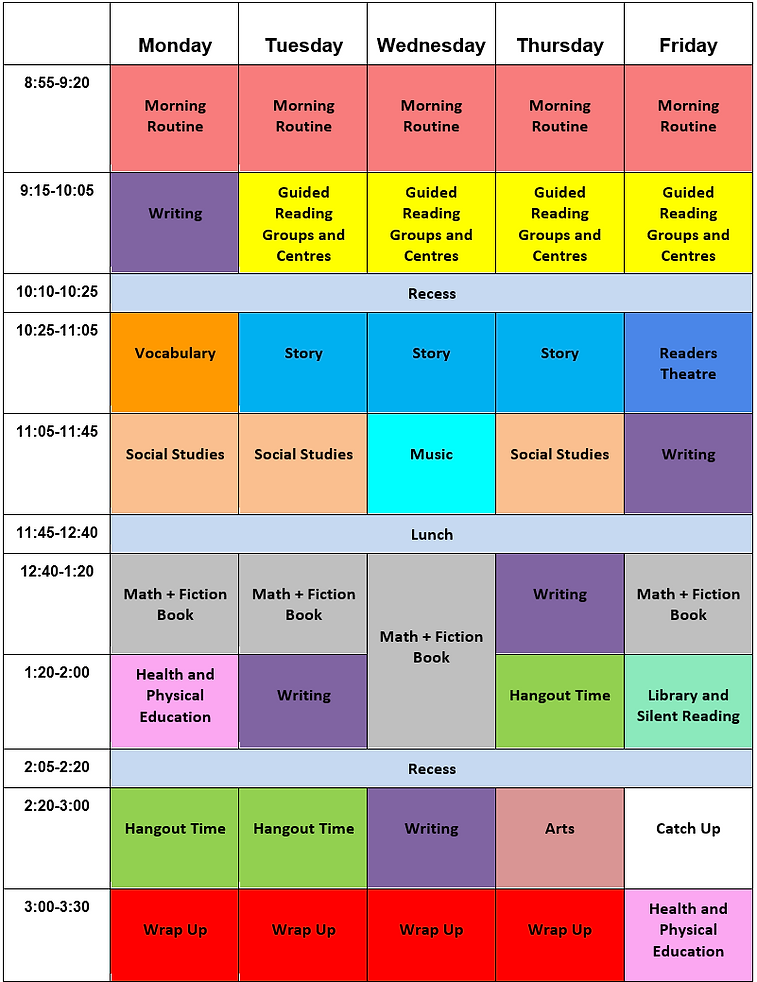
Weekly Schedule

Rationale for Schedule
All 3 of us discussed in detail what we wanted in our weekly schedule. As we covered the basics and moved into specific elements of our schedule, we thought about our students. We discussed what they needed, what would help them and what they would enjoy the most. As a result, our schedule was created with the following qualities in mind. First, the schedule was made to be as consistent as possible. Every elementary student values consistency and being able to come to school every day with no surprises. Consistency also helps students prepare their mind and body for the day. Our colour-coded schedule displays the consistency of most of our subjects, making it easy for students to follow and remember what their school day holds. Another quality of our schedule is that it is literacy-focused. As teachers, we made sure we were aware of what our students needed the most. In this case, they need to improve in literacy. Throughout the week, students will spend a significant amount of time engaging in literacy tasks. The periods were designed to ensure that students have enough time to learn, practice, and apply what they have learned. Our non-literacy subjects are also integrated with literacy, thus increasing students’ time with effective literacy instruction. A third quality of our schedule is its appeal to students. We have set aside times to play literacy games throughout the week. Our morning routines along with our hangout times all incorporate fun literacy and math games to further and reinforce students learning. Our hangout times are literally hangouts, where students can select literacy and math games of their choice and play them with their friends. Another example of how our schedule appeals to students is through its timing and consideration of students interests. For example, we have incorporated a catch up period where students can complete any work that they could not finish. Many students do not like to have unfinished activities, especially when they are fun like the ones in our classroom. Furthermore, we have made sure that our hangout times are close towards the ending of the day with wrap up. This is a great way for students to end their literacy-filled day on a positive and fun note, potentially increasing their confidence in, and interest of literacy tasks.
*Please note, whenever students are done their work they engage in independent reading. There may also be times where we as teachers ask students to engage in independent reading. To simplify reading periods for ourselves, we chose to use the word independent reading for all kinds of reading activities. Therefore, independent reading can be done through silent reading, partner reading, or reading aloud to oneself. These 3 variations will be selected by us depending on what we are doing at the time. For example, during guided reading periods, the group that is reading with teachers will need to focus. Therefore, each student will be doing silent independent reading at that time.*